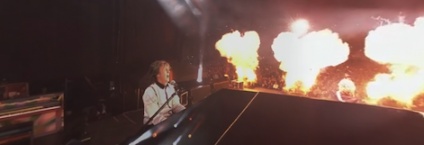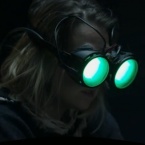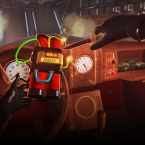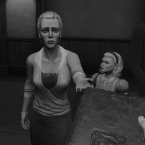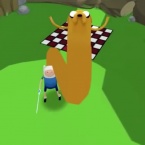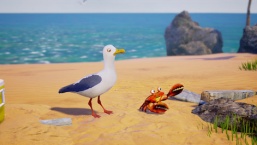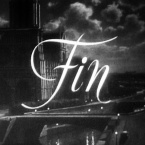Daniel Burwen is Creative Director at Robot Sea Monster Games and one of 50 world-class speakers appearing at VR Connects San Francisco 2017 on the 27th and 28th June. Here, the award-winning comic book creator and interactive storyteller explores how VR will change storytelling and looks at some of the successes in the medium so far.
As VR takes off, primarily in the entertainment space, there’s a lot of hubbub around how to tell stories with this new medium. How has VR storytelling shaped up over recent years with this groundbreaking new platform? To better understand the landscape, I’d like to start by framing the evolution of VR/AR industry at large and then dive deeper on the storytelling component.
VR has been accelerating along a trajectory primarily comprised of three sectors:
- Technology
- Arts + Media
- Consumer Adoption
The evolution of VR devices has been incredibly fast compared to previous technology products.
Tech Foot Forwards
Technology has largely been dominating the headlines, as the evolution of VR devices has been incredibly fast compared to previous technology products. The technology side has been evolving quickly because it’s obvious where tech needs to go in the future - ending up with something like a pair of contact lenses that you wear all the time, every day, in all settings - both work and recreation - and not unlike our smartphones now.
We can reverse back from that eventual destination to a pair of attractive glasses, a pair of ugly glasses, and to the bulky expensive tethered headsets of today. The goals with technology are obvious: higher resolution, better visual fidelity, lose the wires, make it smaller, lighter, cheaper and so on... It’s not easy to accomplish these things, just that it’s obvious where to go next in the evolution and to be able to judge if progress is being made.
Arts And Craft
However, in the arts and media sector - where storytelling lives - this isn’t the case. If you look at the evolution of storytelling over the past 100 years or so, it’s predominantly been owned by film and television. Eadweard Muybridge created The Horse in Motion in 1878, giving rise to the medium and eventually to the first modern film in 1941; Citizen Kane about 60 years later).
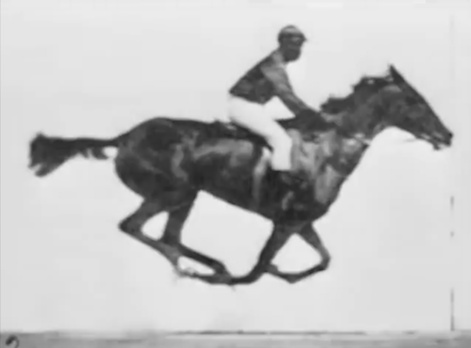
Plus Ca Change
The experience of watching Horse in Motion and Citizen Kane is actually pretty similar to VR from a UX standpoint. You watch, you listen, you infer meaning. Granted, Citizen Kane employs many sophisticated creative techniques that simply didn’t exist in 1878, but that’s how storytelling and art in general evolves.
Editing, camera language, sound and other technological or creative approaches would come from decades of experimentation and innovation, but the fundamental medium and the way we consumed it stayed relatively constant. Through consumer adoption, it became the dominant media format of the 20th century.
As a result, we got a mature film and television industry built on a well proven process and formula for creating the medium. Screenplays, the three-act structure, talent agencies, production companies, film financing and distribution models - and now digital subscription platforms - have all been able to emerge and be sustained due to the format itself remaining relatively unchanged since Citizen Kane.
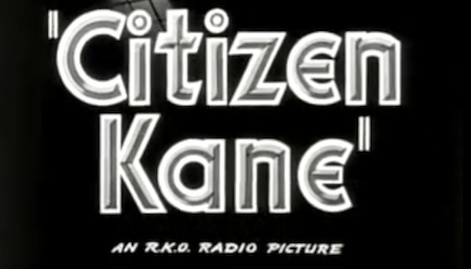
In addition, virtually every media device you own can now play video. All video. From footage captured a century ago to the latest blockbuster feature film. And, the means to create and consume video have become all but completely democratised with the advent of smartphones and services like Youtube.
Rapid and constantly changing VR, AR and MR technologies make it almost impossible for storytellers and artists to master the form.
Strong And Stable
VR, by contrast, does not currently enjoy a stable and constant technological base to build from. Rapid and constantly changing VR, AR and MR technologies and the resulting dramatic changes in User Experience make it almost impossible for storytellers and artists to master the form, as the capabilities keep changing in a very short period of time.
This also creates a challenge for the established and monolithic storytelling machinery of Hollywood, which works on much longer timeframes for bringing projects to market. 18 months or longer is not uncommon for developing a feature film. However, 18 months in VR can see multiple steps forward with the technology and unfolding consumer strategy. As a result, you run a high risk of the project you originally outlined no longer making market or creative sense in light of these changes in technological and consumer behaviour.
A 180 On 360?
For example, if 360 video was the end of the road for the format, and all our resources creatively and technologically were going towards figuring out how to best tell stories in that medium, we would probably get there fairly soon. However, the moment you add positional tracking (6DoF) to a headset and allow the user to see the real world through it (like with the Occipital Bridge), the overall experience is fundamentally different from where you were merely months before as an industry.
Suddenly, all the issues of 3DoF 360 video are either rendered moot or no longer make sense within this new User Experience. This affects our third issue and the one that matters the most: consumer adoption.
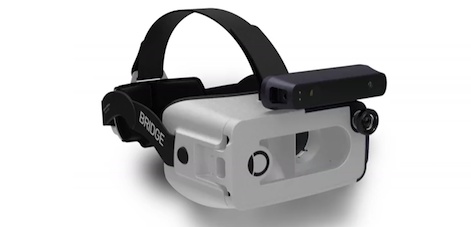
If consumers can’t create a consumption ritual around a product, it will never catch on.
Ritual De Lo Habitual
At the end of the day, if consumers can’t create a consumption ritual around a product, it will never catch on. Film and television evolved from a series of prior media consumption rituals. After consumers were accustomed to going to the movie theatre, in and of itself a ritual derived from attending stage plays and other live performances, the TV set started appearing in living rooms of the home in the late 1940s. It was taking the place of the fireplace where the family gathers for social time and in the past, the time-honoured tradition of telling stories to each other.
The space never changed. Rather, the technology came to fit a behaviour that was already there, first made familiar by attending theatres. TV was also originally broadcast live as radio had been before it, before eventually becoming film-based, thanks to I Love Lucy giving birth to the rerun.
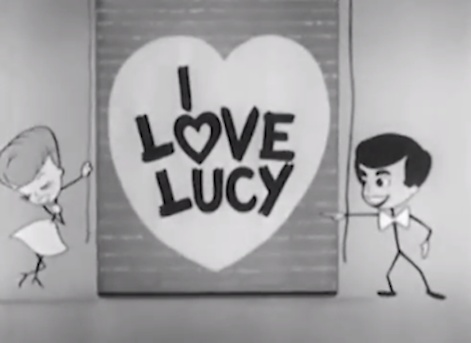
Games in general have struggled with story, primarily to do with the abstract interfaces.
Location, Location, Location
Conversely, where do consumers go to use a VR headset? What pre-existing behaviour can we build on? When you’re isolated from the people immediately around you as is the situation with the headsets of today, you need to look to other places in the home where being isolated makes sense.
The workbench and reading nook spaces are often where people go for a deeper individual experience, sometimes connected to others socially online, but the workbench is not a mainstream media consumption space.
PC gaming is a large demographic, but not one especially known for deep forms of narrative. Games in general have struggled with story for a variety of reasons, primarily to do with the abstract interfaces used to control them. We eventually saw standardisation of the gamepad, born out of the use of the TV remote control, but it remains an interface comprised of pushing buttons and levers.
It is because the interfaces of VR / AR are so natural that we can finally develop interactive narrative experiences with deep emotional content.
Natural Remedies
It is because the interfaces of VR / AR are so natural that we can finally develop interactive narrative experiences with deep emotional content. But the skillset needed to create these types of experiences doesn’t really exist yet. You see bits and pieces of it out there, floating around in indie gaming, web documentary and other fringe subcultures that have largely remained below the radar of mainstream culture, but only now are we starting to see a demand for this rare combination of user agency with narrative. There is little-to-no documentation, knowledge, process, workflow, or even a library of consistent experiences to draw from as we figure it out.
That’s not to say that the medium isn’t emerging. Every week there’s something new and noteworthy to examine and learn from. Much like the early experimental filmmaking of the late 1800s and early 1900s when many modern filmmaking techniques like editing and camera language were being discovered and evolved, we’re now in a similar phase of VR narrative.
Lets take a look at some noteworthy examples and why they’re relevant, starting with a couple of 360 videos before moving on to some realtime 3D...
Click here to view the list »

